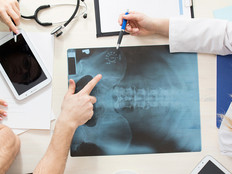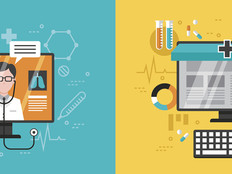Q&A: How Mobile Technologies Continue to Reshape Healthcare
Healthcare is no longer bound by the constraints of rooms and walls. Today’s clinical mobility technologies empower both providers and patients to keep tabs on health and treatment protocols from anywhere.
From remote patient monitoring to remote consults and telemedicine, caregivers are leveraging technologies such as mobile carts, tablets, smartphones and mHealth apps to take patient care to the next level.
For the expert take on the subject, we sat down with Doug Anderson, Enovate Medical’s director of channel sales, as well as Jamie Pilote and Beth Egan, both marketing communications managers. We asked the group about mobile trends, technology and the impact on patients and patient care.
HEALTHTECH: Healthcare is constantly evolving. What developments are you seeing in the industry that are grabbing your attention?
ANDERSON: We’re seeing growing use of mobile products outside the hospital serving as the gateway to electronic health records (EHRs). This expansion adds another layer of portability. And we’re seeing how having the right device in the right spot in acute/ambulatory centers is helping drive next-level applications.
HEALTHTECH: How are healthcare organizations innovating in the hospital and inside hospital rooms?
PILOTE: Inside the hospital, we’re seeing more interfacing with EHRs, which means more people are utilizing both the products and the systems. And where we used to see primarily nurses making entries in EHRs, now we’re seeing an expansion of users. Physicians, dietary departments, physical therapy and others are adding information to the system. This wider application helps to better support patients’ overall healthcare.
There’s also telemedicine. While this technology has been around for a while, more and more hospitals now have initiatives to support it. And with some insurance companies waiving office copay fees for televisits, it’s becoming even more relevant in today’s healthcare environments. We can’t expect every hospital to have a specialist on hand for everything. Telemedicine is one way to enable treatment without having a person in each location.
EGAN: And just to add to what Jamie mentioned, there’s a big drive toward mobility and data sharing across the continuum of care. With industry consolidation — hospital systems acquiring hospitals and hospitals acquiring ambulatory/physician practices — the need to collect and share patient data from one system to another will increase. This adds additional emphasis and importance to accurate data collection and timely documentation at the site of interaction.
This changing workflow is also driving the use of tablets, smartphones, barcode scanners and other intelligent medical devices to capture patient data in real time, which leads to improved patient outcomes across the continuum.
Lastly, I think a big focus is on providing quality products at an affordable price to hospitals, given many face shrinking budgets. We’re seeing more hospitals and clinicians having to fight for dollars when it comes to innovation and technology solutions, so it’s imperative providers deliver quality products and solutions that meet the needs of the caregivers and IT for a fair price.
HEALTHTECH: How does technology impact the patient?
EGAN: In a number of ways, like better outcomes and spending more time with nurses and clinicians. Caregivers have greater accessibility to patient data for making the best decisions based on that data. This translates to patients receiving quicker treatment, more accurate diagnosis, timelier prescriptions and, ultimately, a better overall experience.
HEALTHTECH: How does technology impact the delivery of care?
ANDERSON: If you think about it, nurses got into their profession to take care of people. Technology that’s designed to do just that means they’re getting to spend a greater amount of time with their patients. When that happens, it’s a positive domino effect in that outcomes are better, Hospital Consumer Assessment of Healthcare Providers and Systems scores are better and readmissions are lower.
HEALTHTECH: How do you see mobile technology evolving over the next two to five years?
EGAN: One of the biggest areas I see evolving, given the need for greater communication across the continuum of care, is the need for interrelated point-of-care device manufacturers, software developers and mobile devices to be compatible with one another. One thing that can help is open-source collaboration, which can make nurses’, doctors’ and patients’ lives better. Keeping it open source makes it more beneficial to the end user. So we’re focused on how we can best integrate and stay current with industry trends and how these apply to our mobile solutions.
Finally, we’re also keeping a close eye on interoperability, the Internet of Things, wearables and consumer devices that monitor care remotely.








